Does your child get tired quickly and get a headache regularly? It is likely that he has problems with blood pressure. Our article will acquaint you with the causes of the development of this pathology, and also tell you how to fight with increased and reduced pressure.
Contents of
- What is the normal pressure in children?
- Formula for calculating the pressure in children
- How to measure the pressure of a child?
- Why does the baby have high blood pressure?
- Symptoms of high blood pressure in children
- How to lower the pressure of a child?
- Why does the child have low blood pressure?
- Symptoms of low blood pressure in children
- How to increase the pressure in a child?
- Video: Dr. Komarovsky: Intracranial pressure
For some reason we believe that problems with blood pressure can disturb only adults. But to my great regret, this is far from the case. Recently, there was a tendency to the fact that this pathology began to manifest itself in very young children.
Therefore, if your baby is already in the middle of the day begins to complain of fatigue and headaches, then be sure to measure his blood pressure. And if there is even a slight deviation from the norm, immediately show the child to a specialist. After all, only timely elimination of the causes of development pathologists will allow your child to grow strong and healthy.
What is the normal blood pressure in children?
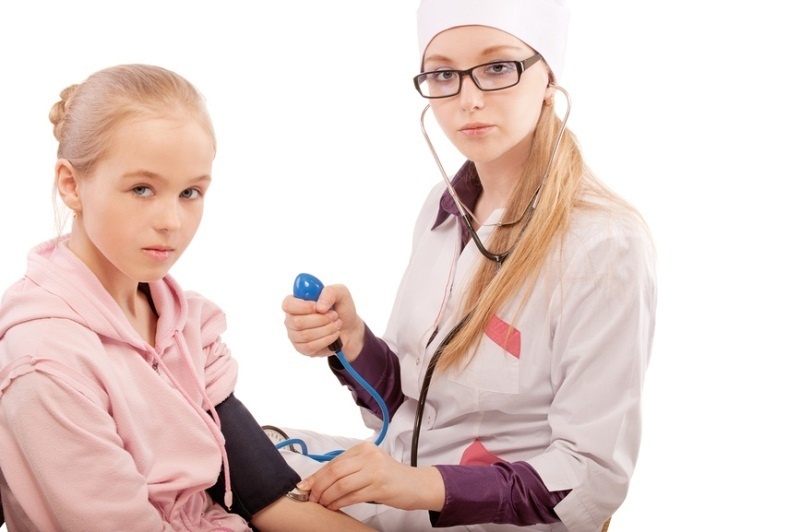 Pressure in children age norms
Pressure in children age norms • As small children have enough elastic vessels, which have rather large lumens and a very developed capillary network, small pressures are considered to be the norm for them. In a newly born baby they can be 80/50 mm Hg. Art. And this does not mean that a small person is not feeling well
• With such pressure, he will live the entire first year of his life, and only when the intensity of growth decreases slightly( usually 12-14 months after birth), his rates will rise to 95/65mm Hg. Art. Further, the older the child becomes, the higher the pressure of the
. • In the children of primary school age, it may already be 100/70.But even at this age, there is a possibility that the indicators may be slightly lower. This may be due to the fact that the baby is not all right with the blood vessels. But still if you approach this problem very seriously, then it will be possible to deal with it quickly enough
• In 12-14 year old children, blood pressure rises to 120/75 mm Hg. Art. And girls, as they develop faster, these indicators are always much higher than in boys. But to determine the norm of pressure in 16 year olds is quite difficult
• At this age, the indicators can vary several times a day. Since morning it can be high enough, and in the evening to fall below the norm. But most often it keeps within 130/85 mm Hg. Art. But after the hormones calm down, the pressure of adolescents stabilizes and does not exceed 120/80 mm Hg.
The formula for calculating the pressure in children
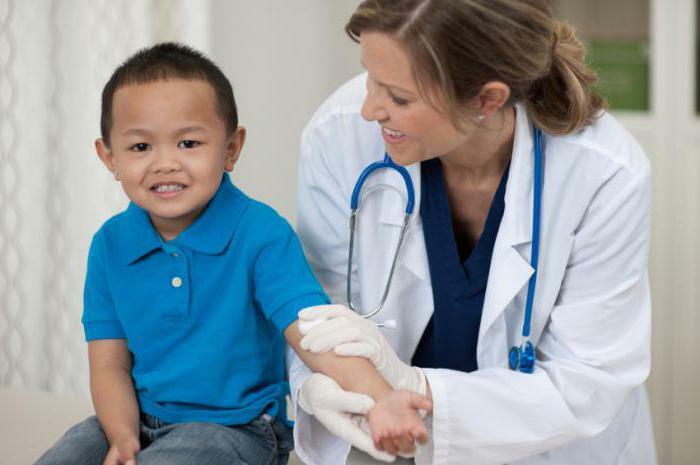 High blood pressure in a child
High blood pressure in a child • As you have already understood the pressure of a person changes throughout his life. It is proved that the older a person becomes, the higher his indicators become. The same changes occur with the body of children. During their growth, the vessels become thinner and less elastic
• All this leads to the fact that by the age of 15-16 their indicators are compared with those of adults. But since babies never sit in place and are almost always in motion, often enough blood pressure may deviate slightly from the
norm. In addition, the environment can be affected by the child's condition, for example, a sharp temperature drop. Against the background of a rapid change in weather conditions, the pressure can both jump up and strongly start. Therefore, young parents must be able to correctly calculate the indicators. In order to understand that with your child all is well you will need to use the special formula
So:
• The age of the child is multiplied by two and record the result on the
sheet. • Add 80( sum and be the top pressure)
to the result. • For example, your son or daughter is 7 years old, then ideally the BP should be( 7 ×2) + 80 = 94
• Lower pressure should be at least 2 times lower than the upper 94: 2 = 47
• That is, the pressure of a seven-year-old child should be within 94/47 mm Hg.
How to measure the pressure of a child?
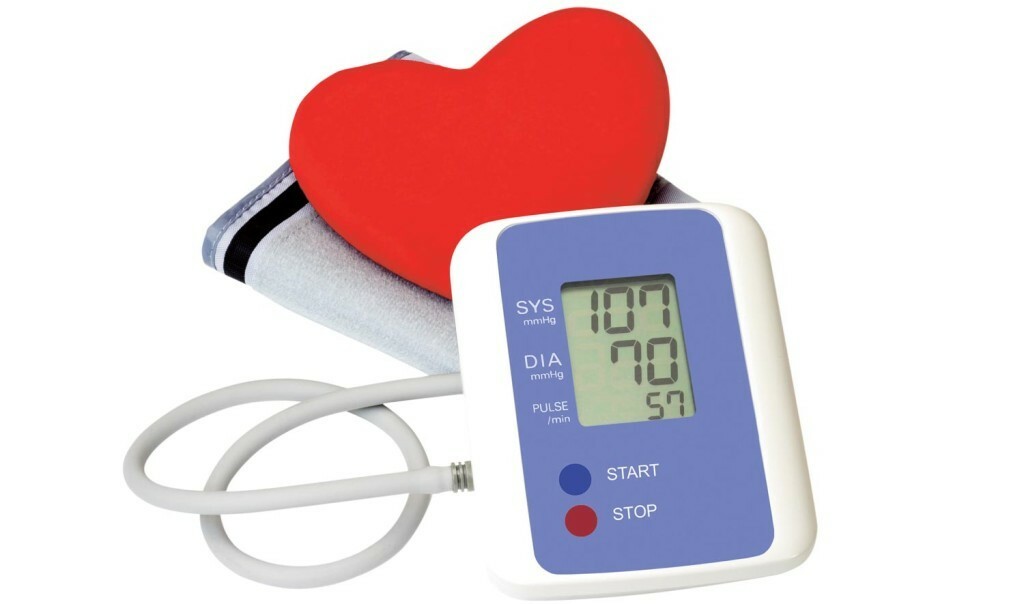 Tonometer for measuring the pressure of a child
Tonometer for measuring the pressure of a child • If your baby is prone to a blood pressure surge, then do not regret the money and buy a quality tonometer. Just remember, if the child is very small, then you can not use standard instruments for adults. In this case, you will have to spend on a special device for children
• When buying it, be sure to pay attention to the width of the cuff, because it will depend on it how accurate the pressure measurements will be. Since small children have very thin hands, the optimal option for them will be a cuff width of 4-6 cm
• For the older age category fit models with a width of 7-9 cm. And remember, to measure blood pressure to your child is necessary only when itwill be as calm
• So even if the kid after a stormy walk complains of a headache, wait at least half an hour and only then make the necessary measurements. For a more accurate result, you can rinse your child several times deeply to breathe
Guidelines for measuring blood pressure:
• Plant or put the child so that his arm is completely relaxed and lay with his palm up
• On the pre-exposed shoulder, apply the cuff of the
tonometer • It mustbe fixed in such a way that its 2 cm lower edge does not reach the bend of the
elbow. • Locate the artery, press the phonendoscope and puff the air in the cufft until the
pulse completely disappears • Start slowly turning off the air-blocking valve
• Listen carefully and see when the pulse appears and when it disappears
• The first heartbeats are considered the upper values of the
blood pressure • The pulsation stops corresponds to the lower
indices. Why does the childDoes the pressure increase?
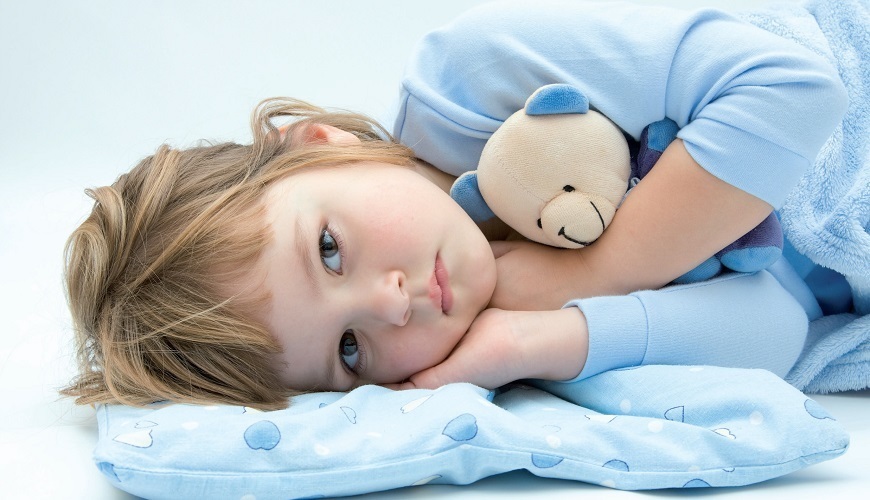 Insomnia can cause increased pressure in children
Insomnia can cause increased pressure in children - Hypertension ( high blood pressure) occurs 15% of children. Doctors conditionally do it for two subspecies: primary and secondary, that is, connected with what would be the disease of internal organs
- Primary can develop almost asymptomatically. To learn about the development can only be if you regularly measure at the same time. Most often, it appears in adolescents during puberty, and they may not even complain about the poor health of the
- . Normally, as soon as the hormonal background of the adolescent comes back to normal, the pressure indicators also stabilize. Secondary hypertension develops a little more often than primary. In this case, the condition of the baby can be normalized only by getting rid of the disease that causes sudden changes in the blood pressure of
. The main causes of hypertension in children:
• The pubertal period
• Short and restless sleep
• Permanent physical and moral fatigue
• Excessive sitting at the computer
• Brain lesions
• Problems with the cardiovascular system
• Kidney anomaly
• Intoxication of the body
Symptoms of hypertension in childrenher
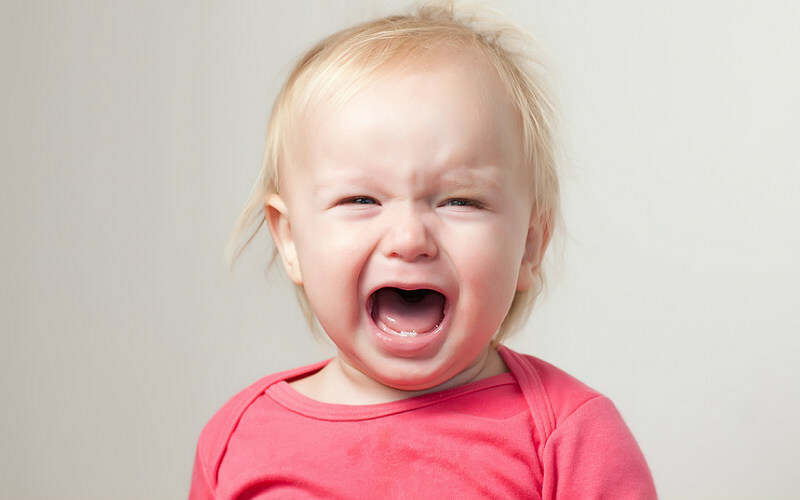 Because of the increased pressure the baby can constantly cry
Because of the increased pressure the baby can constantly cry The first sign that your baby will be prone to blood pressure jumps is a slightly enlarged fontanel. But even if you notice such not very pleasant changes, you should not waste much money.
If you are careful about the health of your child and visit the pediatrician on a regular basis, it is likely that you will manage to keep the pathology under control. But even if everything is normal with the fontanel of your baby, you still need to constantly monitor his state of health, because sometimes the pressure starts to skip even at quite healthy at first glance children.
Symptoms that indicate that your baby has problems with blood pressure:
• Causeless long-lasting crying
• Nausea and vomiting( babies can continually vomit)
• Enough strong expansion of the subcutaneous veins
• Aching pain in the eyeball area
• Headaches intensifyingduring sleep
• Lethargy and fatigue
How to lower the pressure of the child?
 Fresh air can quite help to stabilize the blood pressure
Fresh air can quite help to stabilize the blood pressure Since hypertension can provoke quite serious problems with the cardiovascular system, it is strictly forbidden to engage in self-medication in this case.
For this reason, it is very important that the treatment is not easy to remove unpleasant symptoms and effectively struggled with the factors that provoke their appearance. Therefore, if the child's pressure rises not sporadically, then be sure to carefully examine his body.
Therapy contributing to the normalization of blood pressure:
• Periodic administration of diuretics
• Diuretic medication( it can be Diacarb or Triampur)
• Also mandatory with funds that have a calming effect and enhance the cerebral circulation
• The actions of all drugs are strengthened by physiotherapy procedures
General recommendations:
• Normalize the sleep of the baby
• Try to get all the vitamins and trace elements necessary for it
•Control his pastime near modern gadgets
• Try to keep the baby as long as possible in the fresh air
• At least temporarily reduce the amount of salt in the dishes for the baby
Why does the child have low blood pressure?
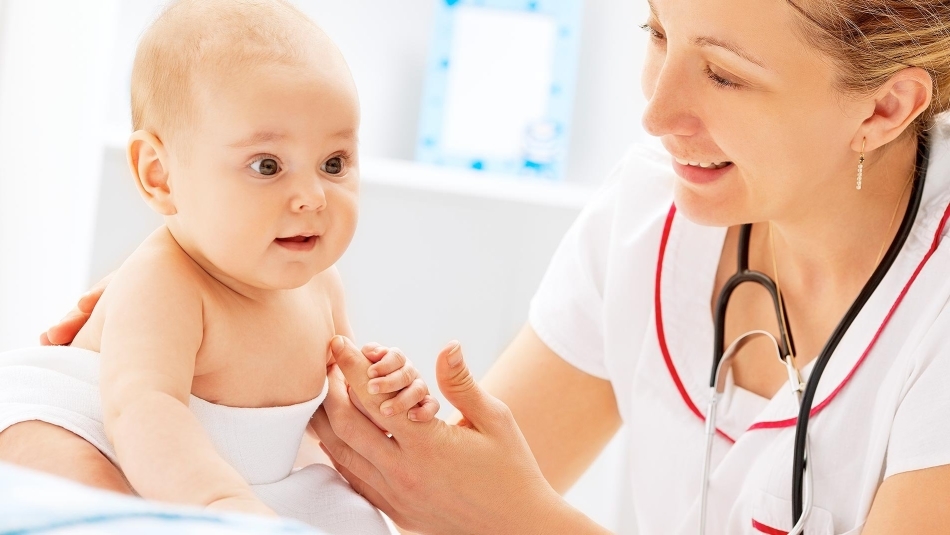 Lowered blood pressure in a child
Lowered blood pressure in a child • Hypotonia is a disease in which blood pressure drops well below normal levels. There are two types of hypotension: physiological and pathological. The first type of routine does not require any treatment, because it does not have a negative impact on the child's well-being or on its development.
• Most often this problem occurs in children who are engaged in gymnastics or live high in the mountains. In this case, the body thus adapts to the pace of life of the baby. Pathological hypotension is a more complex disease requiring treatment. But it can also be divided into the primary and secondary
• Primary often develops against the background of vegetative vascular dystonia, and if the baby leads a healthy lifestyle, then eventually disappears without a trace. In the event that other pathogens of internal organs join the VSD, the child may develop secondary hypotension. This type of the disease requires a thorough diagnosis and proper treatment
Causes of hypotension in children:
• circulatory disorders
• Chronic inflammation
• Mental fatigue
• Drastic dehydration
organism • Severe blood loss
Symptoms of low blood pressure in children
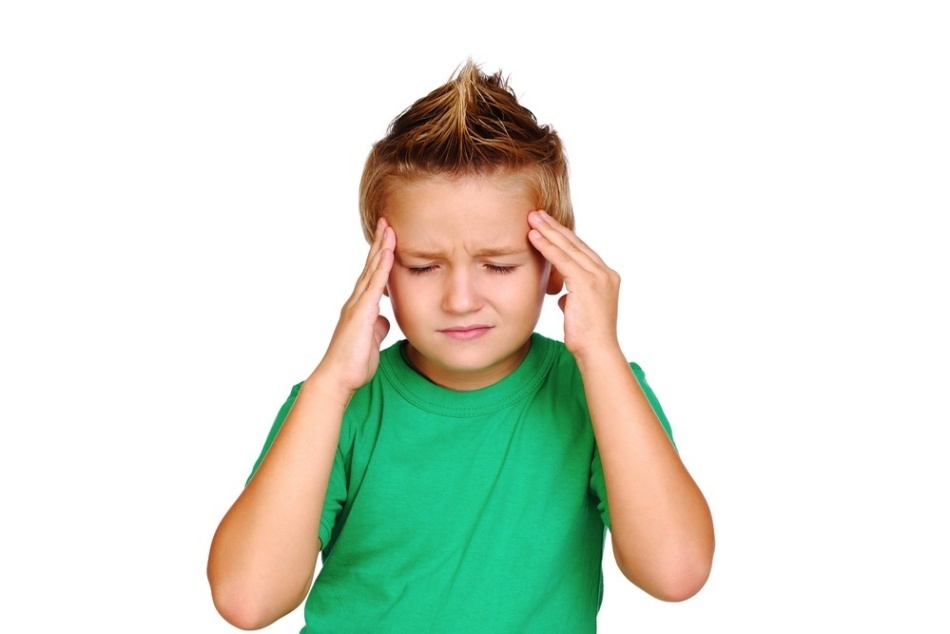 child hurts
child hurts head Moreall children are hypotensive from 4 to 8 years old. Usually the symptoms of the disease are most clearly expressed in the morning. Even before getting out of bed, a child can feel weakness and incomprehensible irritation. Therefore, such children are usually capricious and refuse to go to school or a kindergarten for no reason.
Some parents perceive this behavior as a whim and try to make the child do what he is supposed to do with cries. Unfortunately, this behavior of adults only aggravates the situation. Strong stress has a negative effect on the central nervous system, and it in turn, disrupts the work of the vessels. In the end, this leads to the fact that the baby still descends pressure.
Symptoms of hypotension in children:
• Aching in the forehead and nape of the forehead
• Retardation
• Loss of consciousness
• Child does not perceive the information
• There may be a buildup of gases in the intestines
• Heart failure
How to increase the pressure in the child?
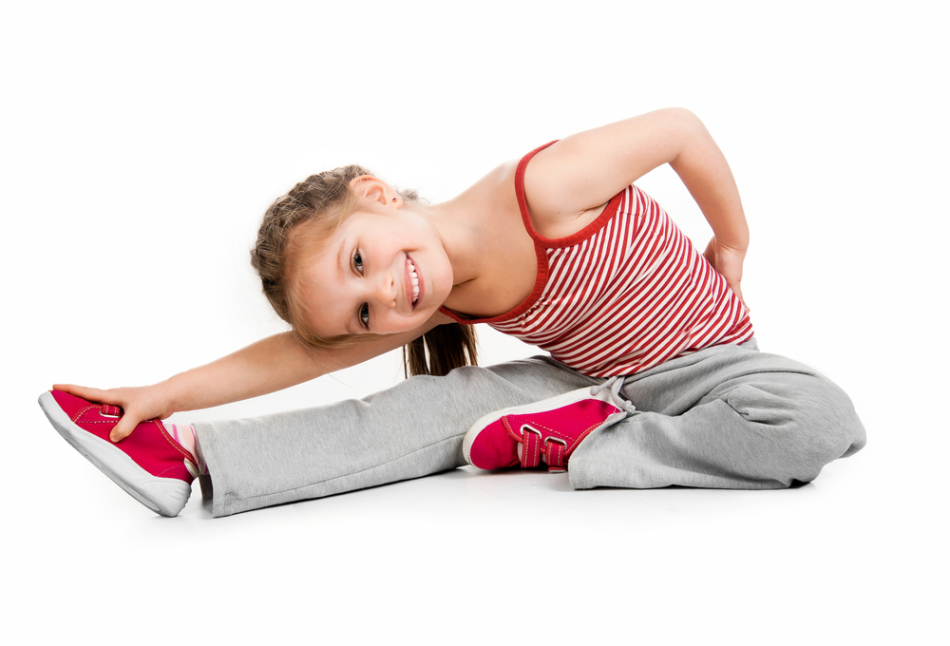 Exercise helps to increase the pressure in a child
Exercise helps to increase the pressure in a child There are medicamentous and non-medicinal ways of treating hypotension. If hypotension is of a physiological nature, then the child may well not take medications. In this case, you will only need to adjust the daily regime of your child and regularly( twice a day) to carry out blood pressure measurements.
But if your child develops a hypotonic disease, then it is treated only by a medicamentous method. After all, if the pathology has become so exacerbated, it will be possible to normalize the proper nutrition of the internal organs and adjust blood circulation exclusively to tablets and potions.
So:
• Teach your child to do morning exercises
• After exercising, you must perform
water procedures. • Divide the daily ration for 6 meals of
. • Take a course of
therapeutic massage. • Also take anticholinergics and antidepressants.
